Moon Orchid, also known as Moth Orchid, Phalaenopsis Orchid, or Phalaenopsis Orchids, belongs to the Orchidaceae family and is prized for its striking beauty and ease of care. The botanical name, Phalaenopsis, reflects its elegant blooms that resemble moths in flight. This perennial plant is native to the tropical and subtropical regions of Asia and northeastern Australia, thriving as an epiphyte in its natural habitat.
Phalaenopsis orchids are well-suited for indoor cultivation, particularly in hardiness zones 10 and 11, where they can flourish under dappled sunlight. With proper care, these orchids can live up to 20 years, producing stunning flowers on arching stems that can remain in bloom for two to three months at a time.
This guide will help you understand how to grow and maintain these captivating orchids in your home, ensuring they stay vibrant and healthy for years to come.
| Common name | Moon Orchid, Moon Orchids, Moth Orchid, Phalaenopsis Orchid, Phalaenopsis Orchids |
| Botanical name | Phalaenopsis |
| Family | Orchidaceae |
| Origin | Tropical & Subtropical Asia, NE. Australia |
| Life cycle | Perennial |
| Plant type | Epiphyte |
| Hardiness zone | 10, 11 |
| Sunlight | Dappled Sunlight |
| Soil ph | Acid |
| Flower color | Green |
| Leaf color | Green |
| Stem color | Insignificant |
| Flower benefit | Showy |
| Uses | Container |
I. Appearance and Characteristics
Phalaenopsis, also known as moth orchids, is a genus of about seventy species of plants in the family Orchidaceae. Orchids in this genus are monopodial epiphytes or lithophytes with long, coarse roots, short, leafy stems and long-lasting, flat flowers arranged in a flowering stem that often branches near the end. Orchids in this genus are native to India, Taiwan, China, Southeast Asia, New Guinea and Australia with the majority in Indonesia and the Philippines.
The genus Phalaenopsis was first formally described in 1825 by Carl Ludwig Blume and the description was published in Bijdragen tot de flora van Nederlandsch Indië. The name Phalaenopsis is derived from the Ancient Greek word φαλαινα (phalaina) meaning ‘a kind of moth’ with the suffix -opsis meaning ‘having the appearance of’ or ‘like’.
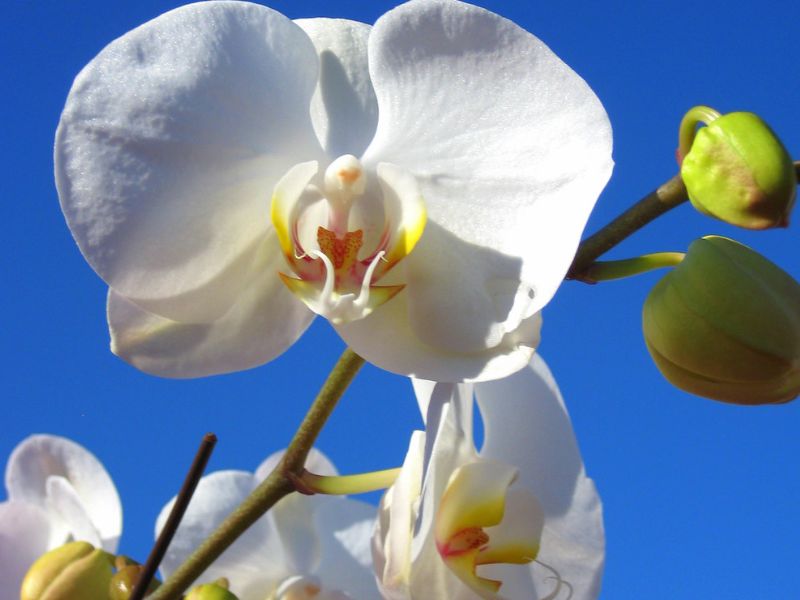
The genus name is abbreviated Phal. horticulturally.
Orchids in the genus Phalaenopsis are monopodial epiphytic, sometimes lithophytic herbs with long, coarse roots with pneumatodes and short leafy stems hidden by overlapping leaf bases. The leaves are usually arranged in two rows, relatively large and leathery, oblong to elliptic and sometimes succulent.
A few to many, small to large, long-lasting, flat, often fragrant flowers are arranged on erect to hanging racemes or panicles. The sepals and petals are free from and spread widely apart from each other. The lateral sepals are usually larger than the dorsal sepal and the petals much wider than the sepals.
The labellum is joined stiffly to the column and has three lobes. The side lobes are erect and more or less parallel to each other and the middle lobe sometimes has a pair of appendages or antennae.
II. How to Grow and Care
Sunlight
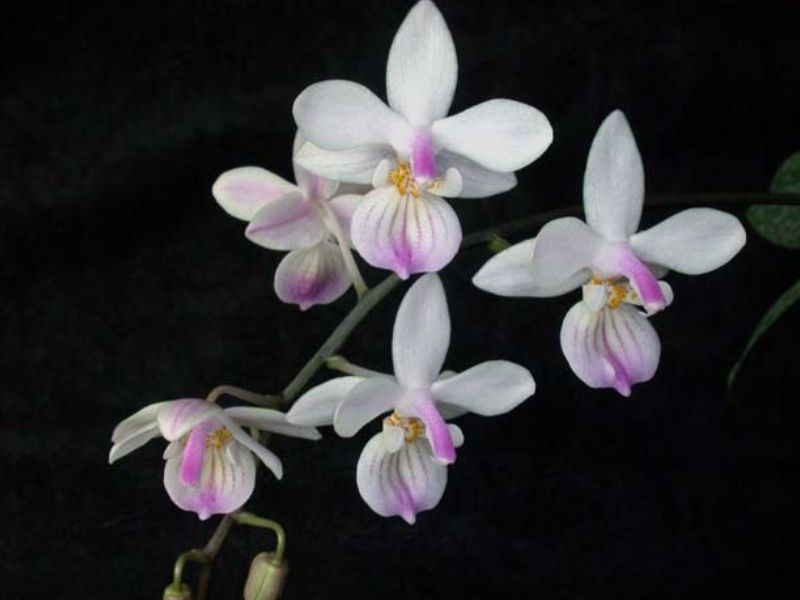
Like most orchids, Phalaenopsis needs bright, indirect light from a south- or east-facing window to produce blooms. Rotate your orchid from time to time to keep its growth even. If there is not sufficient natural light, you can use a fluorescent tube (40 or 74 watts depending on length) to grow light. Place the Phalaenopsis about 12 inches underneath the light.
Temperature and Humidity
Phalaenopsis prefers temperatures between 75 and 85 degrees Fahrenheit but adapts well to normal house temperatures of 65 to 70 degrees Fahrenheit. Orchids also like contrasting night and day temperatures. To induce a flower spike, the plant needs a few cooler nights, with temperatures around 55 F., to bloom.
Watering
Phalaenopsis has a lower tolerance for drought. During the growing season, water the orchid weekly or whenever its exposed roots turn silvery white.
Run room temperature water over the plant, bark, and aerial roots three or four times over 10 minutes, giving the orchid plenty of time for absorption. Be sure the plant has drained completely. Water should never be allowed to rest around the stem of the plant. This will cause the roots, stems, or leaves to rot.
Soil
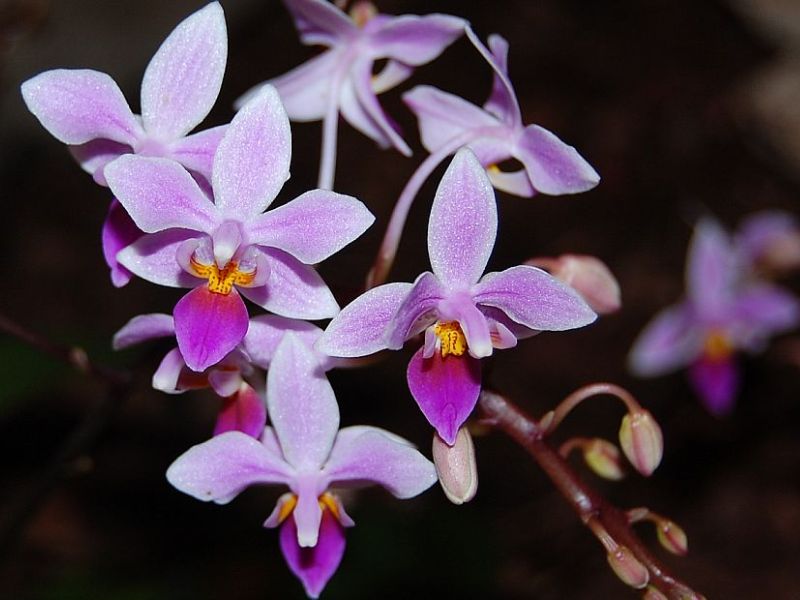
In native conditions, moth orchids grow on trees. To mimic these conditions, potted orchids are often grown in a medium made from fir, redwood, or Monterey pine bark chips.
You can also buy a commercial potting mix that is made especially for orchids. Phalaenopsis need plenty of air circulation around their root system, and won’t thrive in standard potting soil.
Fertilizing
During the growing season (summer), fertilize your orchid with a diluted orchid fertilizer every third or fourth week. Skip feedings during fall, winter, and spring (flowering season) when too much fertilizer will lead to excessive foliage and no bloom.
Pruning
Prune mature orchids once a year during their dormancy period, after the blooms have faded. Using clean scissors or a knife, cut the top portion of the stem back to one inch above a node to encourage a new stem section and more blooms. You can also carefully deadhead the plant, however, spent flowers may just fall on their own.
Remove any brown or black leaves, and snip back unhealthy roots that are either dead and brown, or mushy. It is normal for your orchid to grow roots above the soil. These are aerial roots—don’t cut them off. You can just leave them.
Propagation
Orchids can be propagated by seed, but the process is time-consuming, so it’s best to leave this to commercial growers. Home growers, however, can propagate their moth orchid by replanting the orchid’s naturally produced “baby,” known as a keiki.
Orchid keikis are identical copies of the parent that periodically appear on either old or new flower spikes. After the keiki is about a year old, you can remove it from the parent plant and pot separately.
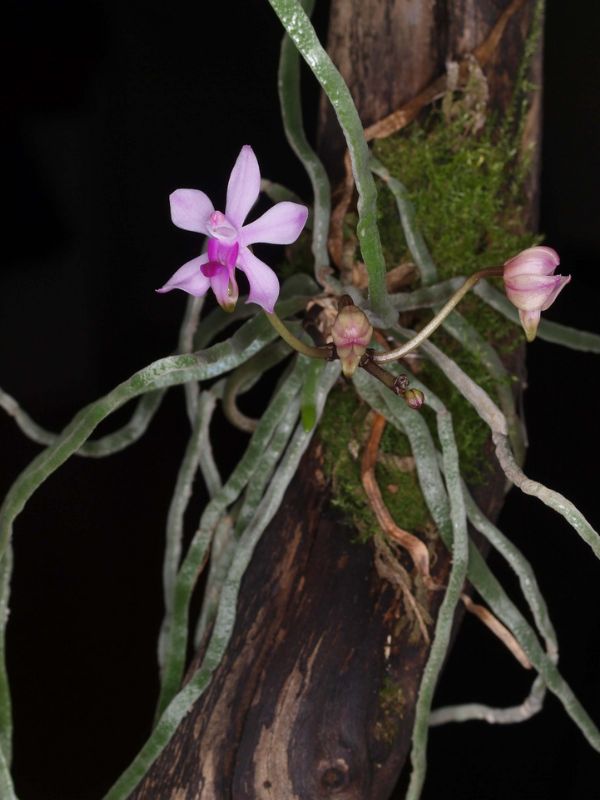
Here’s how to propagate orchids from a keiki:
- Gather flower scissors, alcohol wipes, a pot, a spray bottle, and an orchid-specific potting medium.
- Wait until the keiki is about a year old, three inches long, and has developed two or three leaves of its own and several good roots.
- Disinfect the blades of the scissors with the alcohol wipes and carefully remove the keiki from the parent plant, keeping the roots intact.
- Moisten the bark potting medium and plant the keiki in a pot (it’s okay if the top parts of the roots are exposed).
- Mist the baby plant daily with water until it becomes established.
Potting and Repotting
Repot Phalaenopsis orchids in the spring, after the bloom is done, or when you see roots growing out of the pot (about every two years). Use a pot that is an inch or two bigger than the existing pot, and disinfect it with a weak bleach solution (orchids are very sensitive to bacteria).
Let the pot dry fully, and then fill it with an orchid potting media. Gently remove the orchid from its existing pot, cut away any brown roots, and then place it into the new pot with the moistened bark medium. Gently push the soil around the roots. Mist daily until new roots form.
How to Get to Bloom and Rebloom
In the wild, Phalaenopsis orchids only bloom once a year. But indoors, you can get them to bloom every six months with a few simple steps.
Once the last bloom has dropped, cut the brown stem off to no more than 3 inches in height. Continue caring for your plant as normal and feeding it a diluted liquid fertilizer to promote growth and blooms.
Once the stem has grown a new leaf, it’s ready to rebloom. Relocate your orchid to a cooler area—one with temperatures of 55 to 65 F and bright indirect sunlight. After one month in this cooler environment, your orchid should produce new blooms.
Pests and Diseases
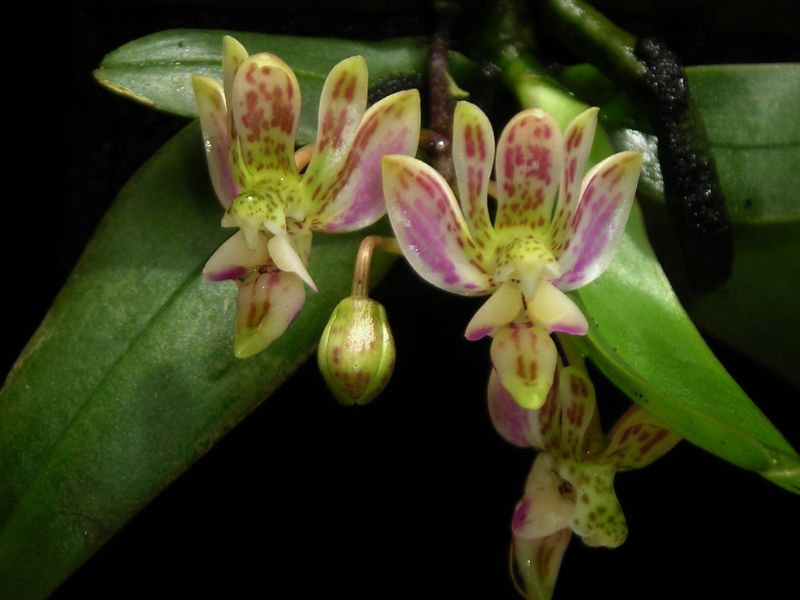
Common Pests & Plant Diseases
Moth orchids don’t tend to have major pest problems. But they can attract common houseplant pests, including aphids, fungus gnats, mealybugs, spider mites, scale, cigar-shaped thrips, and whiteflies. Most pests can be removed with a stream of water, insecticidal soap, or neem oil.
In addition to root rot from overwatering, orchids also can become afflicted with various fungal diseases, phytophthora (black spots on leaves), botrytis, leaf algae, and petal blight.
Wrinkled Leaves
If your orchid’s leaves are wrinkled, you’re likely under-watering and there’s too little humidity. To increase the humidity, add a pebble tray with water below the plant, but don’t let the pot sit in the water.
Yellow Leaves
Overwatering and root rot are often the cause of yellowing leaves.4 Give the orchid growing medium time to dry out between waterings. If that doesn’t work, repot the plant and remove any unhealthy roots.
Buds Dropping
Orchids can experience bud blast—a condition where the flower buds drop without blooming. This is usually caused by sudden changes in temperature, humidity, moisture, or fertilizer. Maintaining ideal growing conditions should lessen the occurrence of problems.
III. Uses and Benefits
Phalaenopsis, abbreviated Phal in the horticultural trade, are among the most popular orchids sold as potted plants, owing to the ease of propagation and flowering under artificial conditions. They were among the first tropical orchids in Victorian collections. Since the advent of the tetraploid hybrid Phalaenopsis Doris, they have become extremely easy to grow and flower in the home, as long as some care is taken to provide them with conditions that approximate their native habitats. Their commercial production has become an industry.
IV. Types of Phalaenopsis Orchids
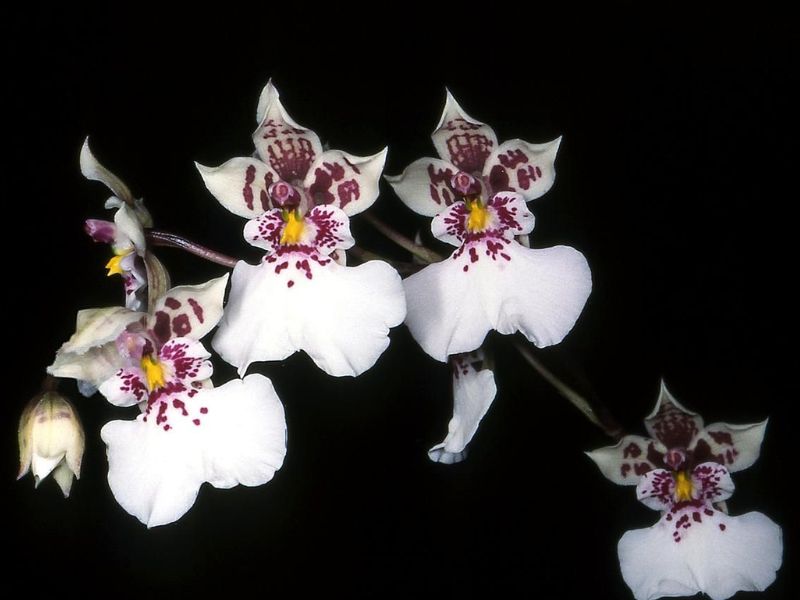
There are 63 true species of Phalaenopsis orchids and seven hybrids.
Phalaenopsis. American Orchid Society.
Some grower favorites include:
- Phalaenopsis ‘Liodoro’ produces wavy, bright green leaves and pink and purple star-like flowers. This plant can reach a height of 19 inches.
- Phalaenopsis schilleriana boasts large 2.5-inch, pink and purple flowers, with dark green variegated leaves. Each stem on this variety can grow up to 200 flowers.
- Phalaenopsis stuartiana produces white flowers with yellow and red dots on multiple branches and can reach up to 30 inches high.
- Phalaenopsis appendiculata is a miniature orchid that blooms in mid- to late-summer and can be used as a hanging plant.
- Phalaenopsis amabilis, often called a moon orchid due to its bright white flowers, requires more light than other Phalaenopsis and the leaves take on a reddish edge.
Find Where to Buy the Best Moth Orchid (Phalaenopsis)





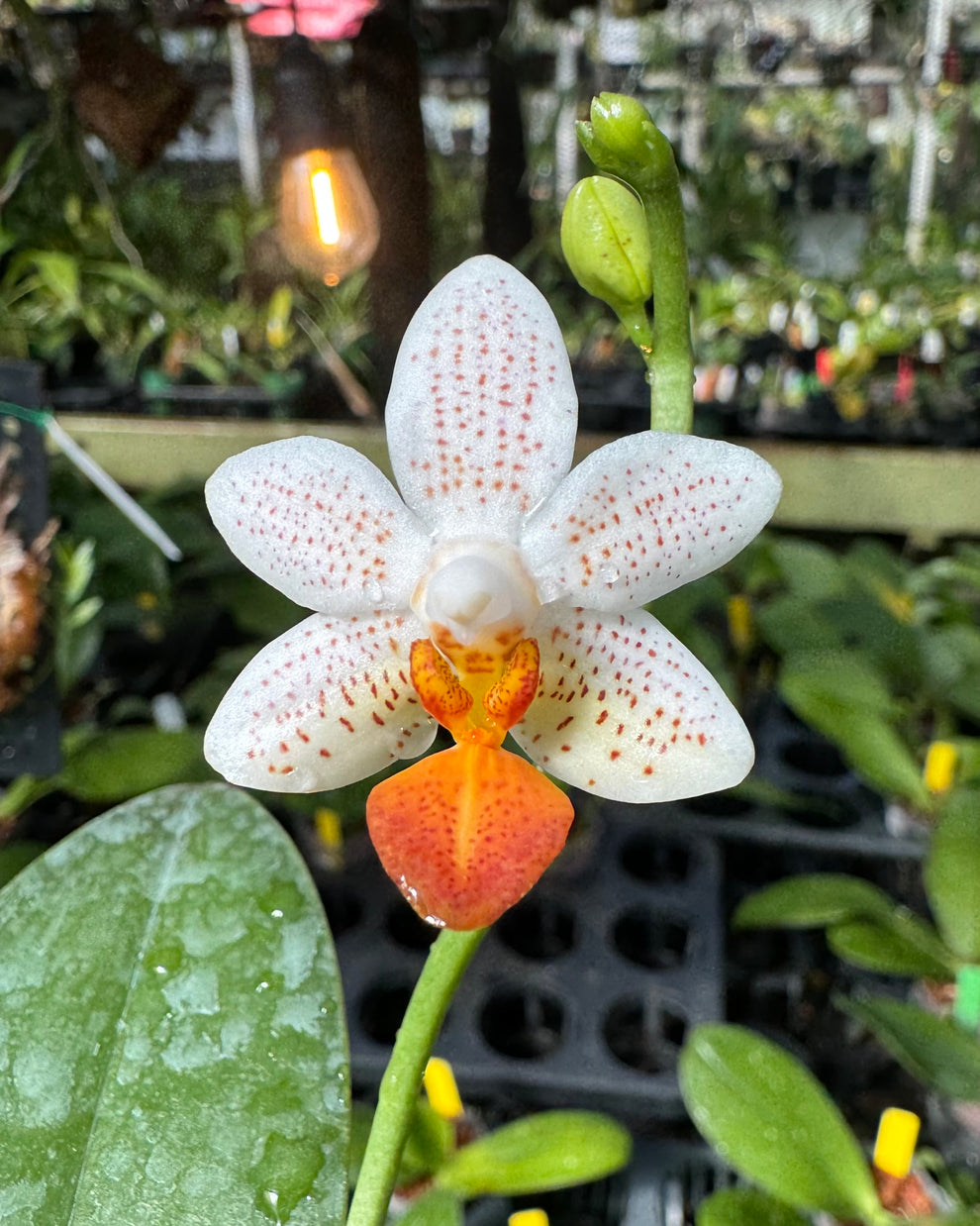




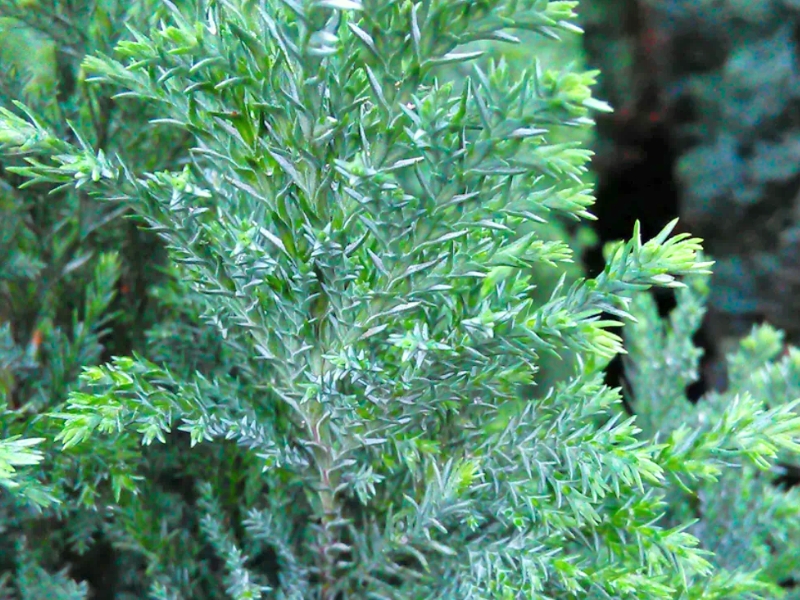
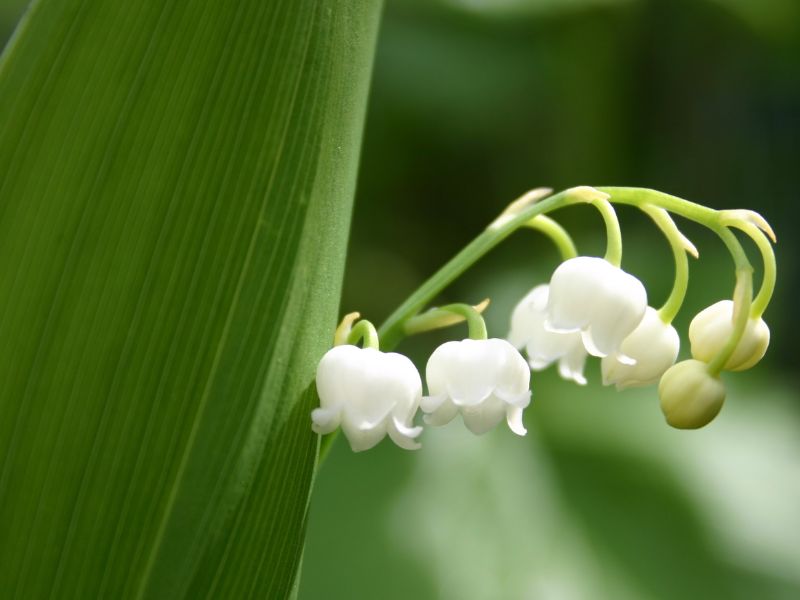
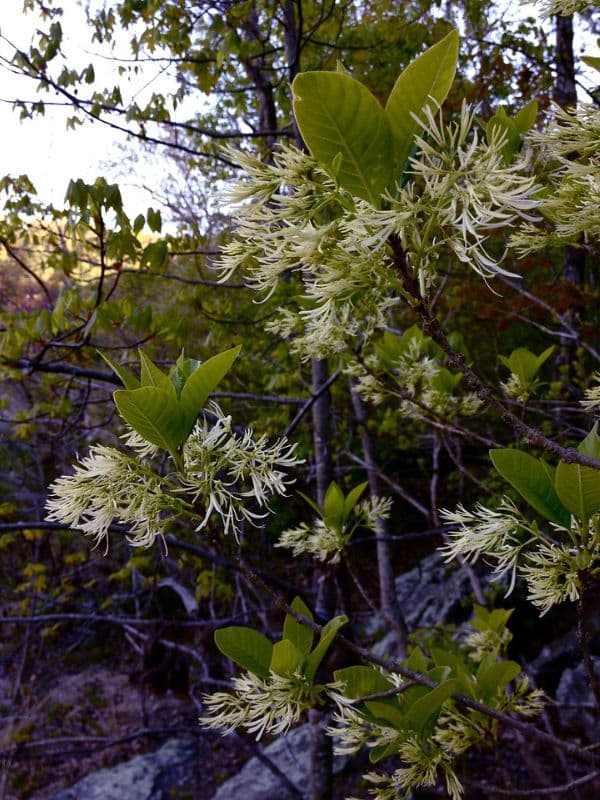
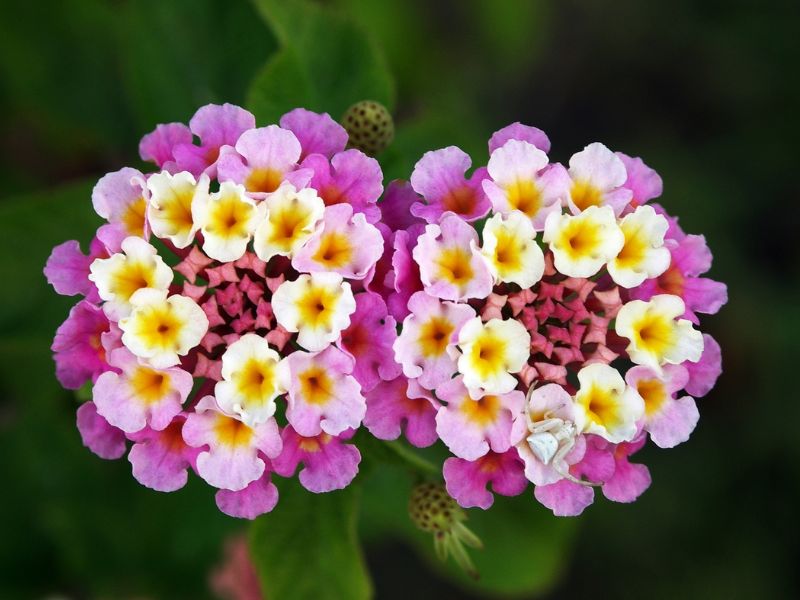
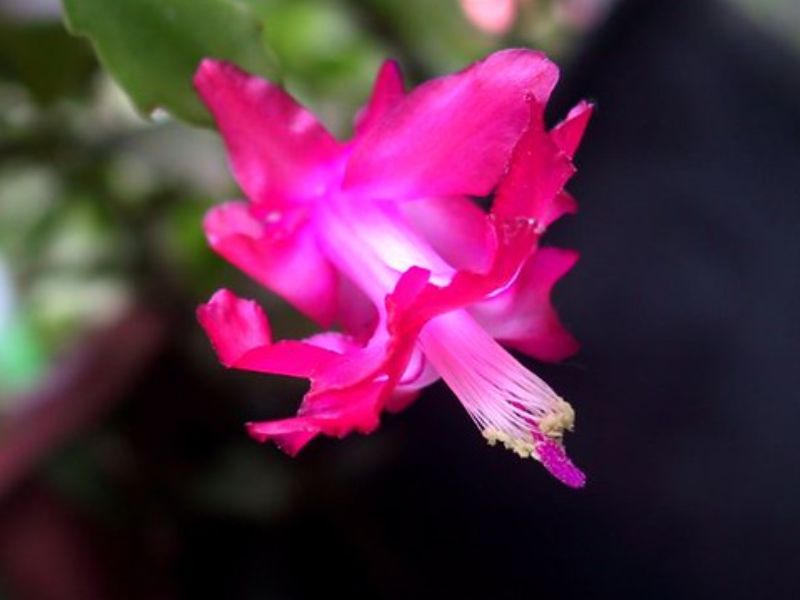
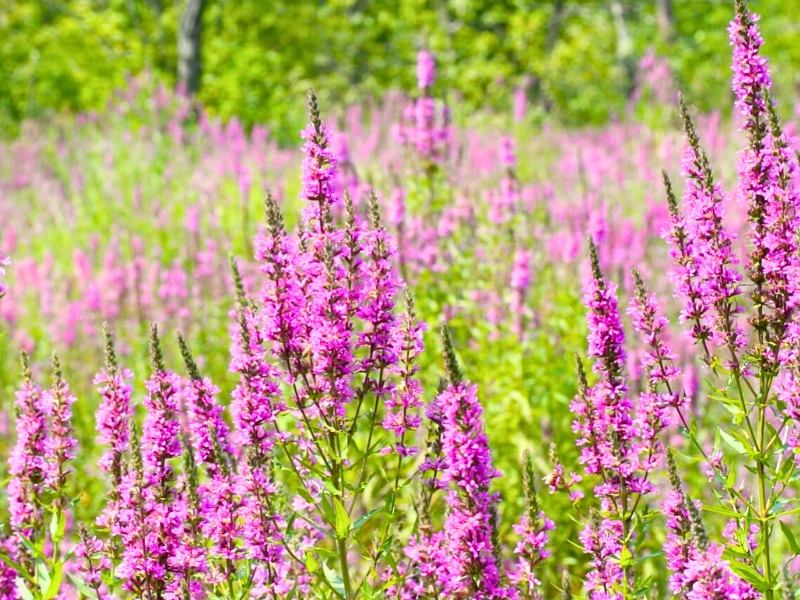
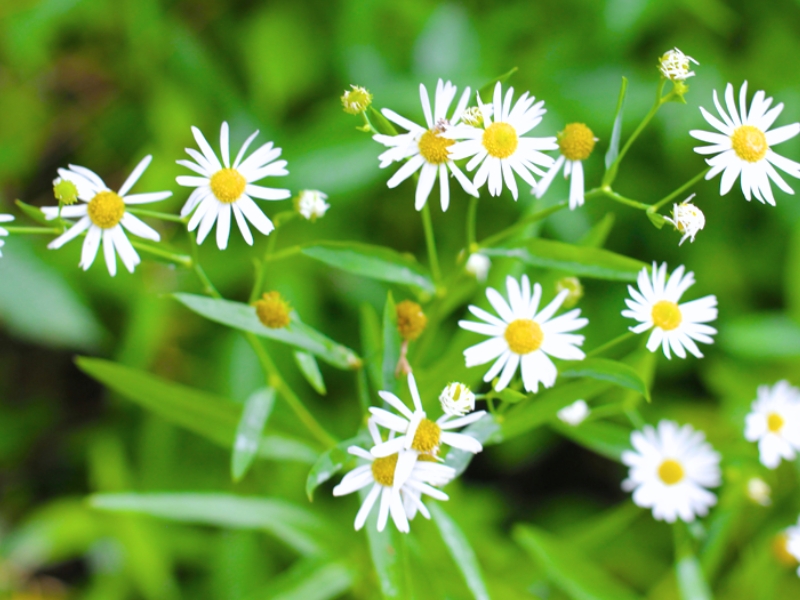
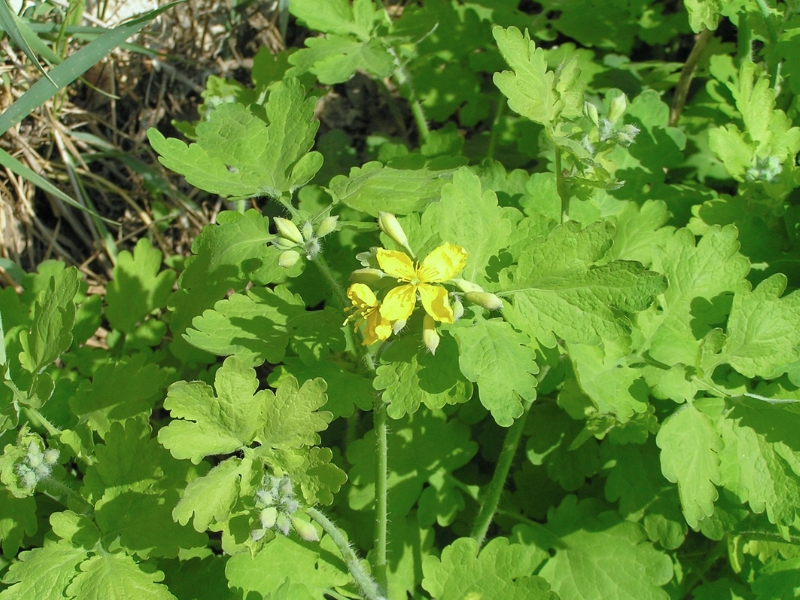
Leave a Reply